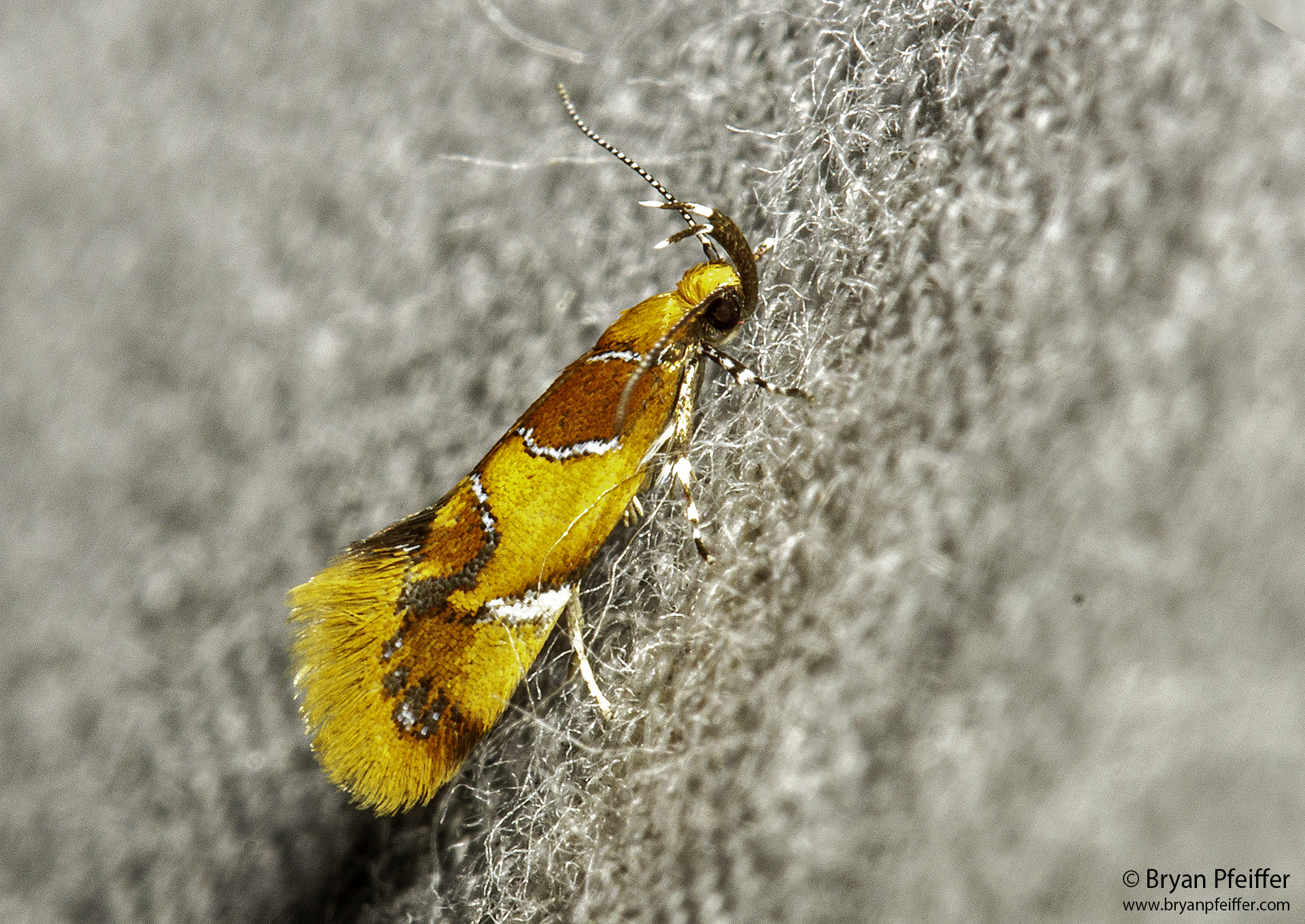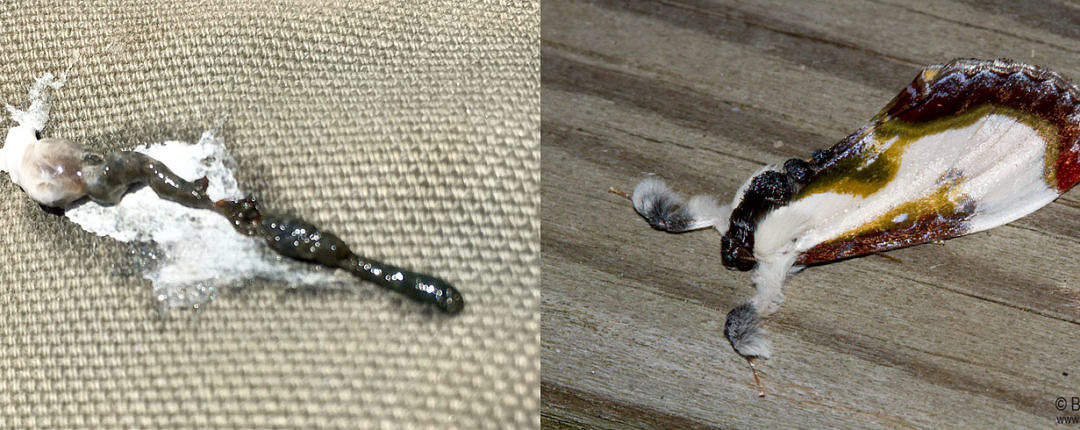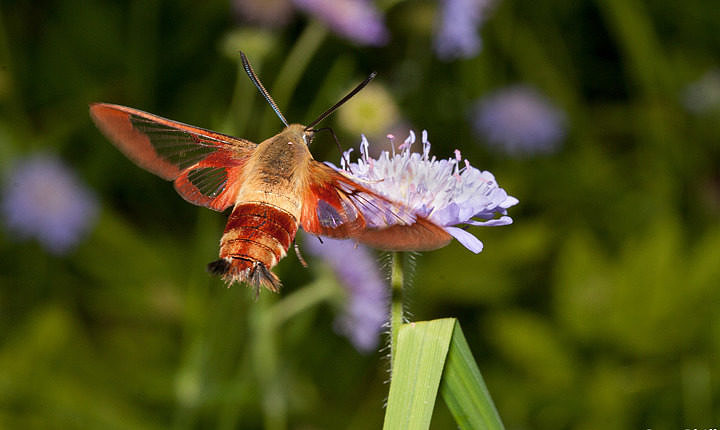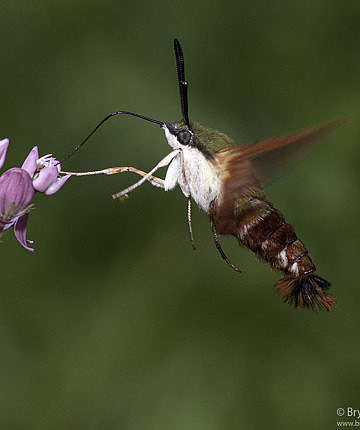
Light from Darkness
Lessons from National Moth Week
Image: Virgin Tiger Moth (Apantesis virgo)
By the thousands they flew into our lives. Moths small as rice. Moths wide as your palm. Moths in mundane browns and grays. Moths sporting zigzags and polka dots. And moths adorned in carmine, azure and gold.
Their common names alone bear witness to their diversity: Ruby Tiger Moth and Rosy Maple Moth. Charming Underwing and Ugly Nest Caterpillar Moth. Small Bird-dropping Moth and Viper’s Bugloss Moth.
By the time National Moth Week ended at midnight Sunday, we Vermonters had photographed more than 3,800 moths representing nearly 603 species. And for many of the 261 “moth-ers” contributing to the project in our brave little state, the moths put on a show in our own backyards. If for some reason you happened to miss out on National Moth Week, and the concurrent 2021 Vermont Moth Blitz sponsored by the Vermont Center for Ecostudies, our results, in all their resplendence, are on display at iNaturalist.org. (By the way, those 3,800 moths were but a mere fraction of the tens of thousands that actually appeared for us.)
So why should you care about the moths we discovered? Well, for one thing, more than any other animal, moths bring biodiversity into view and into perspective (as I wrote a couple weeks ago). I myself, for example, found 121 moths species during the blitz, 107 of which flew in to my backyard light. My tally included what we suspect is a Forgotten Frigid Owlet (Nycteola metaspilella), which had only been seen once before in Vermont (and rarely elsewhere in New England), and Beautiful Wood-Nymph (Eudryas grata), which despite its lovely name looks like a pile of bird shit (evidence below).
Another reason to care is that moths, far from cryptic creatures of the night, bring us the gratifying beauty and ornamentation of nature. Oh, sure, most of us know or have heard of the elegant Luna Moth or, especially this year, Lymantria dispar, the moth formerly named for the Roma people (which was our most abundant moth during the blitz). But consider for a moment Orange-headed Epicallima Moth (Epicallima argenticinctella) — not even a centimeter long, a wild party with wings. (That’s the gem pictured just above.)
On July 22, at 10:27 pm, bleary eyed and out past my usual bedtime, I might have overlooked this tiny explosion of crimson and saffron, which would have been like overlooking fireworks on Independence Day. For most of its waking life, spent as a caterpillar, this moth probably feeds on dead leaves and fungi. Beyond that, we know relatively little about its adventures. Even so, most people living in the eastern US, even in suburbia, are not that far from this spectacular creature.
The three of us that night, miles apart and yet together among moths, celebrated our tiny bursts of color.
On that very night, for example, Jeff Skrentny saw an Orange-headed Epicallima Moth in a Chicago suburb and sent his photo to iNaturalist. And only eight minutes after I located mine, the lepidopterist JoAnne Russo, a guiding and leading light in moth discovery here in Vermont, photographed one of her own in Saxton’s River, Vermont. Although we didn’t know it at the time, the three of us that night, miles apart and yet together among moths, celebrated our tiny bursts of color.
Not incidentally, JoAnne was far and away the gold medalist (and returning champion) during the Vermont blitz, finding 202 species — a tally that also ranked her 11th internationally out of nearly 20,000 international participants on iNaturalist during National Moth Week. (We’re still viewing and verifying all the moth photos — well, actually, JoAnne is doing most of the work — so our final results will change a bit.)
Oh, here’s another cool thing about moths: We overlook so many. As it turns out, during the blitz I overlooked one of the most abundant and obvious moths in my neighborhood here in Montpelier, and one of my most favorite insects: Maple Leafcutter Moth (Paraclemensia acerifoliella). The adults, metallic blue with orange heads, are done flying for the year; but their caterpillars, identified by their telltale feeding marks on sugar maple leaves, are all over the place — the woods are now lousy with them.
Which bring me to the buried lead [the news] of this dispatch (but it’s okay to bury the lead among the multitudes of moths): during the blitz we may have discovered a dozen or so species never before seen in Vermont, including JoAnne’s Witch Hazel Dagger and Charley Eiseman’s Drab Birch Pygmy, identified solely by its leaf mining tracks.
That we’re finding new moths here in Vermont might seem to be good news — that our biodiversity grows. I wish that were so. Instead, among moths, some of the most well-studied insects on earth, it merely illustrates how much we overlook in nature, how much we have yet to learn — and how little we can know about the wild beauty and diversity living among us in our own communities.
So let’s keep looking, learning, finding light in the darkness. Because we cannot protect what we do not know.







Must be the Ruby Tiger. Saw one of these in La Pine Oregon. It was so unusual and beautiful. Did research but couldn’t find anywhere until now. Thank you!! Had never seen one before.
Yep, just leave the porch light on, Marci! 🙂
How about iNaturalist instead? It’s my go-to for reporting stuff like that these days.
Thanks for the report, Maura. I’d agree — Monarchs seem less common this fall.
I’ve seen so very many moths this year. The tiger moth reminds me of a marriage of a monarch and a brown moth. If fact I have seen very few monarchs compared to the past few years. Is there a reason for this. I walk in Barre City in some of the fields adjacent to the cow pasture. Thank you for your great eye.
On July 30 I photographed a clematis clearwing moth outside Cambridge VT and submitted it to https://www.butterfliesandmoths.org/ . It has not been verified yet, but it is one beautiful moth.
Fascinating article! It reminds me how easily I overlook some of the most beautiful presents nature has to offer.
Marci
I look forward to that. Thanks.
Well, a UV list is best. You can get ’em locally at hardware store or party stores sometimes. Or order one from BioQuip. We also sometimes add a scary-bright mercury-vapor light, which can really bring in moths. But most any UV light will really work well.
Kinda like your passion for all thing growing and photosynthesizing! 🙂
Ha! I would LOVE to know that as well. 🙂
You are so welcome, Georgeann. Nice to hear from you again.
The defoliation this year, in places, has been shocking to say the least, Louis. Really stunning. Yeah, it seems more so in the Champlain Valley this year. Thanks for the report!
I have no doubt Colorado glittered and glowed!
Thanks, Bernie. I’ll check that out!
You’re most welcome, Sue. I know you can relate! 🙂
I miss running that class with Hugh. It was spectacular. We gotta do it again!
Wonder is indeed the word among moths! Thanks!
You’re welcome, Rita. At some point, I’ll write a post about all the things out there in nature that moths are mimicking.
Thanks so much, Zara. So nice to hear from you again — it’s been a while.
We’ll get you out here yet at 2:30AM. xoxo
That means a lot coming from such a lovely person.
Lovely, Bryan, as always. I want to share in the excitement. I have a sheet. What sort of light do I need?
As always Bryan, you let me have a good laugh. Love your writing and your passion for all things crawling, flying, munching, and pooping.
I’d like to know what the other suggestions were before they settled on “Small-bird Dropping Moth” as its name.
Thanks again, Bryan!
Dear Bryan,
An excellent article and beautiful photographs about moths. It’s convenient to place the cursor on the picture and have a description overlaid. Clever. I see you didn’t include the Gypsy Moth, not that any of us should be happy to see one! We had a few laying eggs on trees in our yard, which I destroyed. People lower in the valley had many more. Thanks. Lou
Great report on your Vermont Moth Week finds . . . I hope we did as well in Colorado!
Our backyard and barn moths could not figure out how to turn the light on, so many of my posts were daytime portraits.
Moth attempting to turn the light on – https://www.inaturalist.org/observations/88881699
Cheers,
Bernie
Thank you, Bryan.
Found a Sordid Underwing here in ME yesterday and was pretty excited. Taking that moths and butterflies course at Eagle Hill with you and Hugh changed my life, in a way, by opening another portal onto nature for me and encouraging me to focus more closely on these fascinating little guys!
Wonderful!
It’s true Bryan. Since I have let my meadow and most of my yard go wild (save for some walking paths), everyday I am shocked by the numbers of plants, shrubs, flowers, butterflies, and other insects (including moths) I have never noticed before.
Thank for this.
Stupendous array of patterning !
Stunningly delicate, intricate.
Beauteous.
Thank you, thank you.
and fun to have witnessed the set up and excitement first hand!!
I so love the way you put all this into words!! hugs
An especially lovely post.